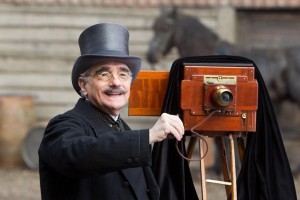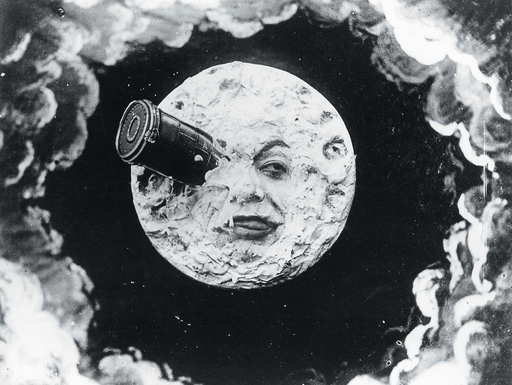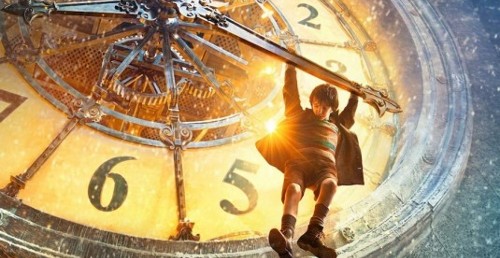Short Fuse Movie Review: “Hugo” Triumphant
I had written Martin Scorsese off and never expected he had a Hugo in him. That he did is the among the touching things in this film.
By Harvey Blume.
Martin Scorsese’s new film Hugo, set in post-World War I Paris, with flashbacks to the birth of French cinema some decades before, is a tale of rebirth and awakening—not least of all Scorsese’s.
The first awakening in Hugo is that of the central character, Hugo Cabret, an orphaned, mechanically gifted waif who is forever dodging a policeman and his snarling Doberman at the Paris train station where he survives on snatched bits of bread and purloined bottles of milk. No one, certainly not the cop who sets his pocket watch by it, suspects that Hugo, who beds down among the giant wheels in the station’s clock tower, is the wizard who keeps that time piece going. Doing so is child’s play for Hugo: his challenge is to reactivate an automaton that is the one thing left to him by his father. If he can only devise and insert the right spring or sprocket, then turn the right key, this machine, which had been created with pen in hand, will perhaps write out who he is.
The automaton leads Hugo to the second major figure in the movie, George Méliès, and to his recovery from breakdown. Méliès is one of the seminal figures in the history of film, but we find him, after his glory days, operating a dismal shop in the train station, making a dull living repairing wind-up toys. For the Lumiére brothers, the first French filmmakers, film springs from its ability to recapture and represent motion. The Lumiéres’ short film of a train pulling into a train station is often referenced in this movie, along with the fact that it induced panic in initial audiences, who hadn’t yet learned to “read” cinema and were terrified by the prospect of that steam-powered locomotive tearing through the screen and flattening them where they sat.
As a filmmaker, Méliès was less interested in motion, per se, than the Lumiéres. He didn’t, for example, take film in the direction of the chase, which remains, in one form or another, a staple of cinema as we know it. Méliès used film as a medium for dream work and magic, extending, through it, his career as a stage magician who had honed his craft at the Théâtre Robert-Houdin, named for the French magus from whom Houdini took his name. (Robert-Houdin will one day, hopefully, get the film his life and career deserve. Perhaps Erich Weiss—aka Houdini—will narrate that movie.).
Méliès’s films were burned, lost, or forgotten during World War I, which required, if it required film at all, documentarians and propagandists more than fabulists depicting trips to the moon. In Hugo, the title character, with some help from his automaton (who turns out, as is appropriate, to be more of a graphic artist than a writer) brings Méliès back to pride of place in cinema.
As I’ve suggested, the third new lease on life this film confers is on Scorsese himself. Scorsese was once a great filmmaker. Few who have seen Mean Streets (1973), would doubt it—and few who have seen that movie, a classic that inordinately rewards re-seeing, will have only seen it once. But by the time you get to The Departed (2006), no matter that he had recruited the likes of Jack Nicholson, Matt Damon, and Alec Baldwin to the cast, Scorcese is played out.
In Mean Streets, violence was a part of the plot, less memorable, finally, than the intense relationship between the main characters, played by Harvey Keitel and Robert De Niro. This is a buddy and an anti-buddy movie, rooted in the milieu of New York City’s little Italy Scorcese knew so well. Mean Streets is a sort of riposte to Coppola’s The Godfather, made the previous year. There is no grandeur to the gangland of Mean Streets; its Don is, if anything, an anti-don. But Mean Streets is suffused with movie history. For example, when Johnny Boy (De Niro) climbs a roof in Little Italy and raises his arm in a fuck you salute to all of Manhattan, you are entitled to think of King Kong climbing the Empire State Building and raising his own fist against the world.
That’s Mean Streets. When we come to The Departed, Scorsese is still working with violence but only because he seems stuck with it and doesn’t know how to manage anything else. Without the Hollywood trappings and the big name casts, the later Scorsese is a broken down Méliès in a small shop fixing wind-up toys.
I had written him off and never expected he had a Hugo in him. That he did is the among the touching things in this film. Scorcese is on record laughing about the pleasure he took in 3D and digitalization. What comes through his laughter is his love of movies, obvious throughout this luminous film that celebrates its origins.
Tagged: France, George Méliès, Hugo, Martin Scorsese, Short Fuse, fantasy film




Hugo is a wonderful movie. It’s a hymn to the dazzling illusions of cinema. Scorsese made a movie about himself, so how come I didn’t feel like it was some kind of ego trip? Maybe because it was a genuine celebration of something very good.
I agree you completely. I would only add that Scorsese’s made a movie about Méliès that has the magic of a Méliès movie—a Méliès movie for our day & age.